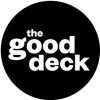What is it?
The Metaphor Game is a creative brainstorming exercise that sharpens your ability to create meaningful metaphors.This process enhances your communication abilities, as metaphors are powerful tools for simplifying complex ideas by relating them to something more familiar.
Start by forming pairs—this activity works best in groups of two. One team member person secretly selects a word related to a chosen theme, while the other generates random nouns within a set time. The person with the secret word uses one of the nouns to create a metaphor. After swapping roles and refining their metaphors together, the pair shares their most interesting creations with the group. This activity enhances creative thinking by encouraging connections between unrelated concepts.
This process sharpens creative thinking skills and enhances your ability to forge abstract connections, making it a valuable tool for writers, designers, and problem solvers seeking to infuse fresh perspectives and creativity into their work. Over time, you'll notice that your mental associations become more diverse and expansive, and you'll become more adept at drawing connections between seemingly unrelated things in various aspects of life.
When to use it
|
Remember to
|
Step-by-step
1 |
Gather materials Collect index cards or scraps of paper, writing utensils, and a notebook or paper for each team. |
2 |
Choose a focus Select a theme or focus for your metaphors. For example, "emotions" or "nature." |
3 |
Generate a list of related words Brainstorm 30 nouns based on your chosen theme. Chose your favorite 20, and write each one on a separate index card or scrap of paper. For example, if “emotions” was the theme, this list could include words like Joy, Happiness, Laughter, Melancholy, Fury, Serenity, Confusion, Elation, Anxiety, Anger, Contentment, Bitterness, etc. |
4 |
Mix up the list Shuffle the list on a table or in a box. |
5 |
Get into groups of two Divide participants into teams of two. Each team chooses one member to start. The selected team member draws a word from the pile of related words without showing it to their partner. |
6 |
Set up a simple metaphor structure On their own paper or index card, the first team member writes "[the word they drew] is a ____________________" 15 times, leaving a blank space for the metaphorical comparison. |
7 |
Set up a timer and fill in the blank Set a timer for 2 minutes and have the other team member provides 20 random nouns (objects, animals, places, etc.) to their partner. The first team member fills in the blank with each of the provided nouns to create 20 different metaphors. The emphasis here is on quick, spontaneous creativity. |
8 |
Reverse roles Switch roles within the team. Now, the second team member draws a related word and the first team member generates random nouns. |
9 |
Collaborate and refine As a team, review both sets of metaphors created. Look for opportunities to combine, expand, or refine them into more elaborate and compelling metaphors. |
10 |
Share and discuss Have teams share their most intriguing metaphors with the group. Encourage discussion and exploration of the metaphors' meanings and imagery. |

